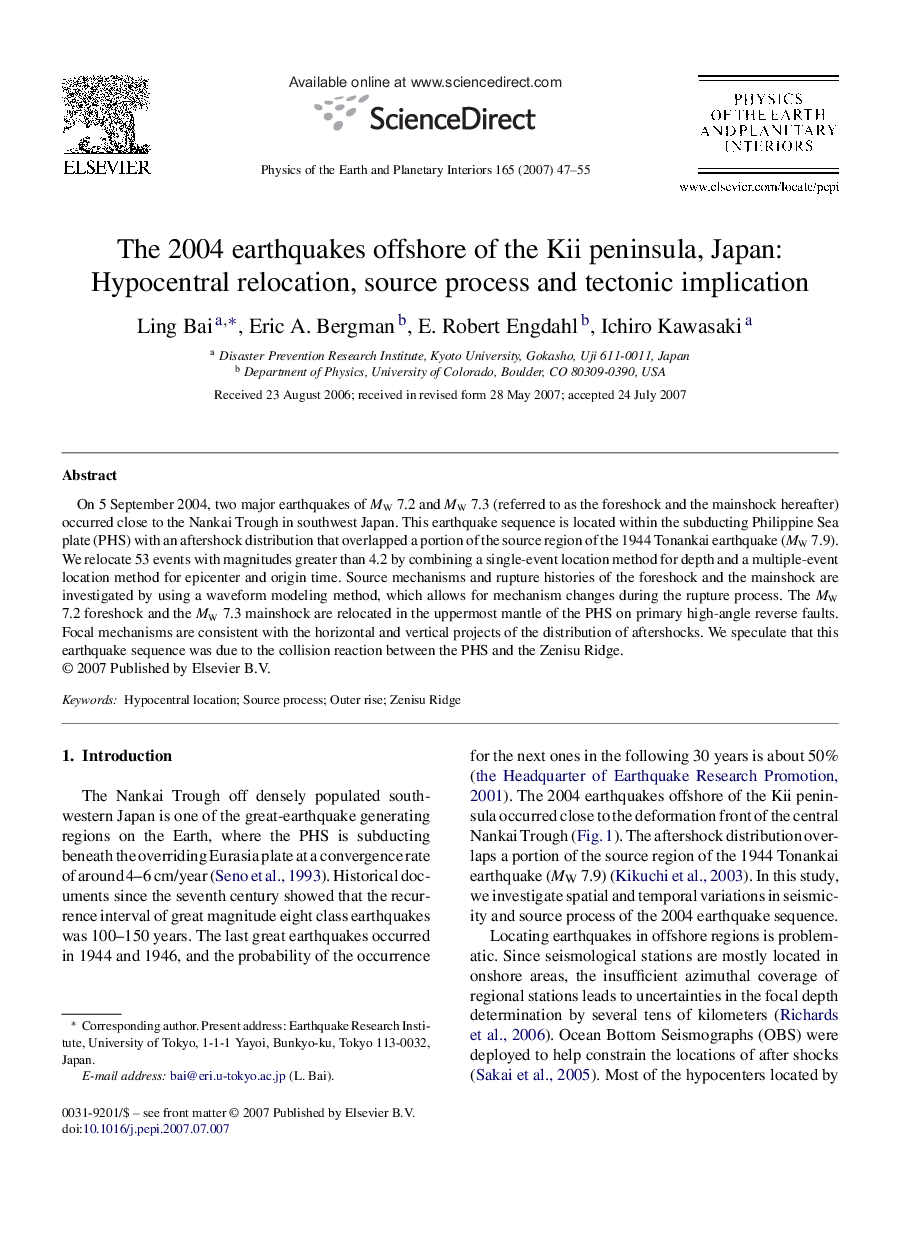| Article ID | Journal | Published Year | Pages | File Type |
|---|---|---|---|---|
| 4742617 | Physics of the Earth and Planetary Interiors | 2007 | 9 Pages |
On 5 September 2004, two major earthquakes of MW 7.2 and MW 7.3 (referred to as the foreshock and the mainshock hereafter) occurred close to the Nankai Trough in southwest Japan. This earthquake sequence is located within the subducting Philippine Sea plate (PHS) with an aftershock distribution that overlapped a portion of the source region of the 1944 Tonankai earthquake (MW 7.9). We relocate 53 events with magnitudes greater than 4.2 by combining a single-event location method for depth and a multiple-event location method for epicenter and origin time. Source mechanisms and rupture histories of the foreshock and the mainshock are investigated by using a waveform modeling method, which allows for mechanism changes during the rupture process. The MW 7.2 foreshock and the MW 7.3 mainshock are relocated in the uppermost mantle of the PHS on primary high-angle reverse faults. Focal mechanisms are consistent with the horizontal and vertical projects of the distribution of aftershocks. We speculate that this earthquake sequence was due to the collision reaction between the PHS and the Zenisu Ridge.
